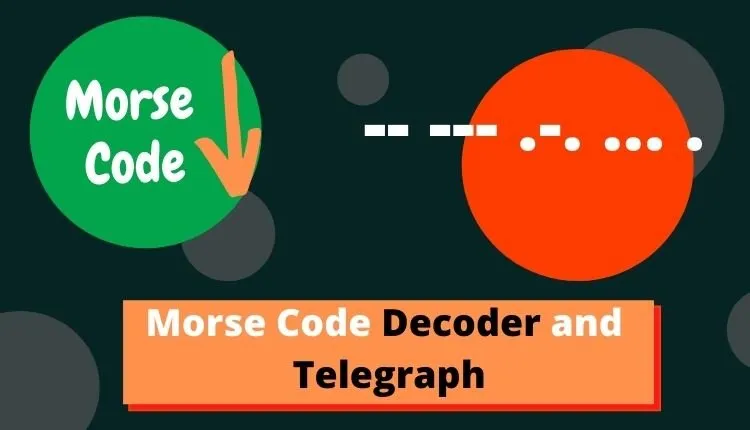
Although the telegraph is not used often anymore, it was a major advancement in communication when it was invented and for many years afterward. Originally, an optical telegraph was used to communicate, but it required a line of sight between the people communicating, and the electric telegraph is the one most people think of when they hear the word "telegraph."
Several inventors contributed to the development of the electric telegraph in the 1840s. It would be possible to send electrical signals from one location to another, where they could be translated into messages. In this way, the entire nation was changed, as people could now send and receive messages almost instantly.
The need for written letters decreased, even though these were and are still an important form of communication. Telegrams were expensive to send, so they were usually reserved for more urgent matters; letters were still primarily used to communicate.
Electromagnet
The electromagnet was invented by William Sturgeon in 1825. Besides being used to lift heavier weights than before, Sturgeon's invention was also used in many communication advancements.
Telegraph systems: A brief history

In 1830, Joseph Henry was able to send an electric current over a wire to ring a bell at a distance of three miles using an electromagnet. Similar electromagnetism concepts were used by Cooke and Wheatstone to create an early telegraph, which was patented in 1837. The commercially viable telegraph system we know today was invented by Samuel Morse.
Who is Samuel Morse?
The New York University professor Samuel Morse achieved the successful transmission of a message using electromagnets and electric pulses in 1835.
A year later, he improved his design by including dots and dashes. In 1835, Congress funded Samuel Morse to construct a 40-mile telegraph line between Baltimore and Washington; once legislators realized how much easier it was to communicate with constituents through the telegraph, more lines were built.
In addition to being an artist, Morse was also known for his ability to capture the essence of people's personalities in his delicate portraits.
Cooke and Wheatstone: 5-needle telegraph
The first commercial electric telegraph was invented and patented in 1837 by William Fothergill Cooke and Charles Wheatstone. A telegraph machine like this one works by sending patterns of electricity down a wire to a receiver, which points at letters of the alphabet, forming the message sent by the sender.
Cooke and Wheatstone gained early recognition when their telegraph system was implemented successfully on the railways to transmit messages, signals, and, most importantly, time. Each region of Britain operated on its own 'local' time during the 1830s, based on sunrises and sunsets.
A standard time system was needed to run the railways, which were springing up across the country at a rapid pace. Timetables began running on 'railway' time soon after local times were synchronized by telegraph in more and more locations. The time was adjusted to coincide with 'London' or 'Greenwich Mean time' by 1855, telegraphed and transmitted via cables throughout the country.
Telegraphy made a revolution possible in world communications, laying the foundation for new applications in military intelligence and personal communication in the second half of the century. Transatlantic telegraph cables were laid in 1866, allowing communication between Europe and North America to be done within hours rather than weeks previously.
First Morse Code Message.

'What hath God wrought ?' was the first official message sent by telegraph.” Annie Ellsworth was the daughter of a friend of Morse, who chose this message. An operator later translated the dots and dashes on a paper tape that was recorded by her in Numbers 23.
The Rise of Telegraph
Private investors used private funds to build telegraph lines from Philadelphia to New York, like Samuel Morse. As a result, small telegraph companies began to spring up throughout the United States. Using telegraphs, railroads dispatched trains in 1851 after Western Union was founded.
Western Union completed the first-ever transcontinental telegraph line in 1861, which primarily followed railroad tracks. This was an incredibly important year for the telegraph.
Morse code messages were originally printed on paper tape, but as time went on, the system was changed to an auditory process where operators would listen to pauses and sounds and takedown messages at a rate of 40 to 50 words a minute. In 1900, an automated system for converting Text to Morse Code was created, and in 1914, automatic transmission technology was developed.
Telegraph and New Innovations

As a result of Western Union's 1913 invention, they were able to send four messages in each direction at the same time. It is called multiplexing. The number of transmissions increased to 36 in each direction in 1936. The first fax machine was invented by Western Union in 1938, similar to today's fax machines.
In 1959, the telex network was created, marking the next major advance in telecommunications. By using this technology, subscribers were able to communicate directly with one another, greatly improving communication across the country.
What is Multiplexing
To transmit and receive information, multiplexing-shortened to "muxing"-is used in telecommunications like radio, telephone, and television. Multiplication enables multiple analog or digital signals to be sent through a single transmission line.
A multiplexer, or MUX, combines signals coming from multiple devices over a transmission line.
As each signal, or digital data stream, is input to the MUX, the integrated circuit reads, analyzes, and assigns a fixed-length time slot to it. As soon as a MUX is assigned, a single composite signal is generated, and a piece of data from each time slot is transmitted through a high-speed transmission line at a fixed length.
A demultiplexer, or DEMUX, is used at the opposite end of the high-speed transmission line to analyze and separate the composite signal.
Telephone Rivals the Telegraph
Telephones were invented in 1877, and by 1879, they were operated separately from telegraphs. Eventually, the telephone would be the most common form of communication, but we wouldn't have much of the communication technology we use today without the telegraph.
